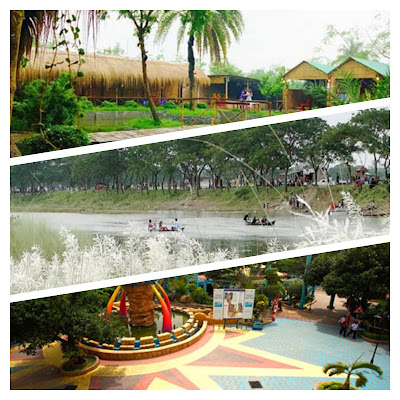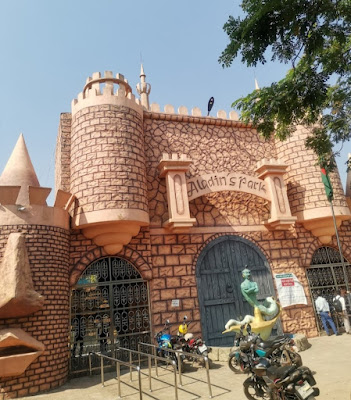"Panam City-The-Ghostly-Grandeur-Unveiling-The-Architectural-Tapestry-Of-Sonargaon's-Forgotten-Past"
The Lost City of Sonargaon: A Definitive Guide to Exploring Panam Nagar's Hidden History
The Time-Worn Elegance of Panam Nagar: Unveiling Bengal's Forgotten Merchant City
Introduction: Step into Bengal's Forgotten Capital
Close your eyes and imagine a silent street, lined with ornate, crumbling mansions that whisper tales of bygone wealth. This is the reality of Panam City, the architectural jewel hidden within the ancient boundaries of Sonargaon—a region once known as the 'Golden Village' and the beating heart of Bengal’s power for centuries. Unlike the ancient ruins you might expect, Panam Nagar is a relatively modern ghost town, built by textile tycoons during the final flourish of British colonial rule. As the global centre for the legendary Muslin trade faded, these merchant families created an elaborate, single-street testament to their fortune, blending European columns with traditional Bengali aesthetics. This guide invites you to peel back the layers of dust and history, to walk the silent road where millionaires once negotiated, and discover why this deserted street remains one of Bangladesh's most poignant and beautiful secrets.
Panam City, or Panam Nagar, located within the historic bounds of Sonargaon, Narayanganj, is a hauntingly beautiful archaeological site that encapsulates the rich commercial and cultural history of pre-partition Bengal. Flourishing predominantly from the late 19th to the early 20th century, it emerged as the primary trading centre for cotton fabrics, including the globally celebrated Muslin.
 |
| Panam city Sonargaon |
Genesis and Historical Context
While its roots connect to Sonargaon, the capital of the Bengal Sultanate, the modern iteration of Panam was established by a wealthy Hindu merchant community during the colonial period. These traders controlled the vital river-based trade routes, making Panam a crucial commercial nexus. The city's construction served a dual purpose: a protected residential zone for the affluent merchant class and a convenient hub for their extensive trading operations. This economic prosperity allowed the merchants to invest heavily in grand, elaborate homes, signifying their rising status within the colonial economy.
Integrated Architectural Marvel
Panam City is distinctly laid out along a single, approximately 600-meter-long linear street, flanked by around 52 well-preserved, though decaying, structures. The architecture represents a striking syncretism of styles, reflecting the diverse cultural influences of the time:
- European Colonial Elements: Prominent features include Corinthian, Doric, and Ionic columns, ornate pediments above doors, large arched windows, and balconies supported by decorative brackets.
- Local and Mughal Influences: These are visible in the overall urban planning, the necessary inclusion of inner courtyards (uthans) for Bengal's climate, and the use of intricate decorative plasterwork crafted by local artisans.
- Victorian and Art Deco Touches: Later buildings display imported materials like coloured glass and stylistic elements such as geometric railings, indicative of contemporary global architectural trends.
Functionally, the buildings were often two or three-storeyed, with the ground floor frequently serving as godowns or shops, and the upper levels designated for living.
Decline and Conservation Imperative
The city’s vibrant life ceased abruptly following the Partition of India in 1947, which prompted the exodus of the merchant families to India. Their sudden departure led to the rapid abandonment and subsequent decay of the properties.
Today, Panam City is a protected archaeological site managed by the Department of Archaeology, Bangladesh. However, its future is constantly threatened by severe conservation challenges:
- Environmental Degradation: The tropical climate, heavy monsoon rains, and aggressive vegetation growth (particularly tree roots) cause constant damage to the lime plaster and structural integrity.
- Vulnerability: Despite its protected status, the site has been listed on the World Monument Fund's watchlist, highlighting the global concern over its fragile condition due to past vandalism and the complexity of restoration.
Despite its ghostly appearance, Panam City remains a pivotal historical landmark, offering invaluable insight into the socio-economic structure and hybrid architectural evolution of pre-partition Bengal.
Welcome to a journey back in time, to a place where the grandeur of ancient Bengal whispers through crumbling brick walls. Just 27 kilometers southeast of Dhaka, nestled near Narayanganj, lies Sonargaon—once the glorious capital of Bengal during the time of the legendary Baro Bhuiyans and Isa Khan.
 |
| Panam city |
This post focuses on the crown jewel of the area: Panam Nagar (Panam City), often dubbed "The Lost City" by Bangladeshis. Isa Khan established the capital here in the 15th century, and the city spans approximately 20 square kilometers. Recognized globally by the World Monument Fund in 2006 as one of the world's 100 most endangered historical sites, Panam offers a rare glimpse into the region's rich architectural and commercial past.
⭐ Attraction Notice: We must preserve these tourist spots as national assets. Refrain from any actions that harm nature and the environment, and encourage others to do the same. This land belongs to us, and its protection is our responsibility.
Section 1: Panam Nagar Unveiled – Architecture, History, and Waterways
Panam City is one of the three ancient cities of Sonargaon—Boro Nagar, Khas Nagar, and Panam Nagar—with Panam being the most magnificent and commercially attractive. It was here that wealthy Hindu merchant communities managed the lucrative Muslin trade.
A. Architectural Marvel and Affluent Design
As you enter Panam City, a single, narrow road lined with rows of stately old buildings immediately catches your eye. The architecture is a captivating blend of Mughal, Greek, and European (Colonial) influences, reflecting the opulence and distinctive construction of the merchant class.
- Residential Count & Structure: The main street is lined with 52 significant houses—31 on the north side and 21 on the south side. These buildings vary from single to two or three stories in height.
- Unique Features: The buildings feature intricate cast iron work and beautiful red, white, and black mosaic work. Houses were typically divided into a public-facing 'Bohir Bati' (Outer House) and a private 'Ondor Bati' (Inner House).
- Civic Structures: Beyond residences, the city housed a mosque, a temple, a monastery, a dancing hall, an inn, the 400-year-old Takshal Bari (Mint House), and the East India Company's Nilkuthi (Indigo factory).
B. Natural Setting and Trade Routes
- Waterways: The city is surrounded by the Pankhiraj Canal, which connects to the Meghna River and the Shitalakshya River. This route was vital for the export of the famous Muslin cloth.
- City Gates: The city entrance features a large gate that was traditionally closed at sunset. Visitors are not permitted to stay within the city limits after evening.
Section 2: Visitor Information and Planning Your Trip
Panam Nagar is located approximately 27 kilometers (17 miles) southeast of Dhaka, near the Mograpara Point on the Dhaka-Chattogram Highway.
A. How to Reach Panam City (Travel Guide)
- By Bus (Recommended): Board a bus (Doel, Shodesh, or Borak AC) from Gulistan, Dhaka to the Mograpara Crossing (Chowrasta). The bus fare is typically BDT 40–65.
- Mograpara to Panam City: From Mograpara Chowrasta, take a Rickshaw or Auto-rickshaw (BDT 20–40). You can also walk the short distance from the Folk Arts Museum.
- Other Transport: There is no direct railway, air, or water transport system available.
B. Entry Fees and Operating Hours
The official visiting hours for Panam City and the nearby Folk Art Museum are regulated seasonally. The site observes a weekly holiday every Sunday, remaining completely closed to visitors.
During the Summer Season (April to September), the operating hours are as follows: On Mondays, the site opens for half a day, welcoming visitors from 2:00 PM to 6:00 PM. From Tuesday to Saturday, the site operates throughout the day, opening at 10:00 AM and closing at 6:00 PM.
For the Winter Season (October to March), the hours are slightly adjusted: On Mondays, the gates open from 1:30 PM to 5:00 PM. From Tuesday to Saturday, visitors are welcome from 9:00 AM to 5:00 PM. Visitors should plan their trip accordingly, especially avoiding Sundays.
C. Where to Eat (Dining Guide)
Local restaurants near the site have faced complaints of overcharging, making bargaining essential. It is highly advisable to dine in the nearby Sonargaon Upazila Sadar or the main Narayanganj City.
- Sonargaon Upazila Options: Kalapata Restaurant and Khaja Restaurant (Mograpara Chowrasta).
- Narayanganj City Options: Various popular eateries including Monir Restaurant, Azmiri Biriyani House, and Food Garden Restaurant (near 2 No. Rail Gate, B.B. Road).
D. Where to Stay (Accommodation)
As Panam Nagar is close to Dhaka, you can visit and return on the same day. No accommodation is available at the site itself. If an overnight stay is necessary, you must book a place in the main Narayanganj city or Sonargaon Upazila Sadar.
1. Sonargaon Upazila:
-
Royal Resort
- Address: Kashnagar Dighirpar, Sonargaon, Narayanganj.
- Contact (Mobile): 01709371680, 01709 371 681, 01709 371 682
- Corporate Office: Royal Plaza (3rd Floor), H-8/A, R-4, Dhanmondi, Dhaka-1205.
2. Narayanganj Sadar (City Centre Hotels):
|
Hotel Name |
Address |
|---|
|
Hotel Meherun |
Sanaton Pal Lane Road, Narayanganj. |
|
Hotel Sonali |
1 No. Rail Gate, Sanaton Pal Road, Narayanganj. |
|
Hotel Narayanganj |
1 No. Sirajuddoula Road, Narayanganj. |
|
Hotel Sugandha |
Liyakat Super Market, 12/20 Digu Babur Bazar, Narayanganj. |
|
Hotel Meena |
16 Mohim Ganguly Road, Tanbazar, Narayanganj. |
Section 3: Beyond Panam – Sonargaon's Historical Circuit
If time permits, explore the surrounding historical sites:
- Folk Arts and Crafts Museum (Lok Shilpa Jadughar): Located just 1 km away, this museum preserves heritage items like sculptures, Jamdani sarees, Nakshikantha, and handicrafts.
- Goaldi Hossain Shahi Mosque: A beautifully preserved 16th-century mosque.
- Historical Sites: Explore remnants like Musa Khan’s pleasure palace, Sonakanda Fort, Dumdum Fort, Fetah Shah’s Mazar, the Mazar of Baro Aulias, and Kadam Rasul.
Conclusion: A Must-Visit Time Capsule
Panam Nagar is a rare architectural gem that stands as a silent witness to Bengal’s golden age of trade and culture. Its unique blend of Mughal and European styles, coupled with its historical significance, makes it an unparalleled destination for history and photography enthusiasts.
⚠️ Disclaimer: Information regarding hotels, resorts, vehicle fares, and other costs is subject to change. Please verify current information through reliable sources before planning your trip.
- Also visit:




Comments
Post a Comment